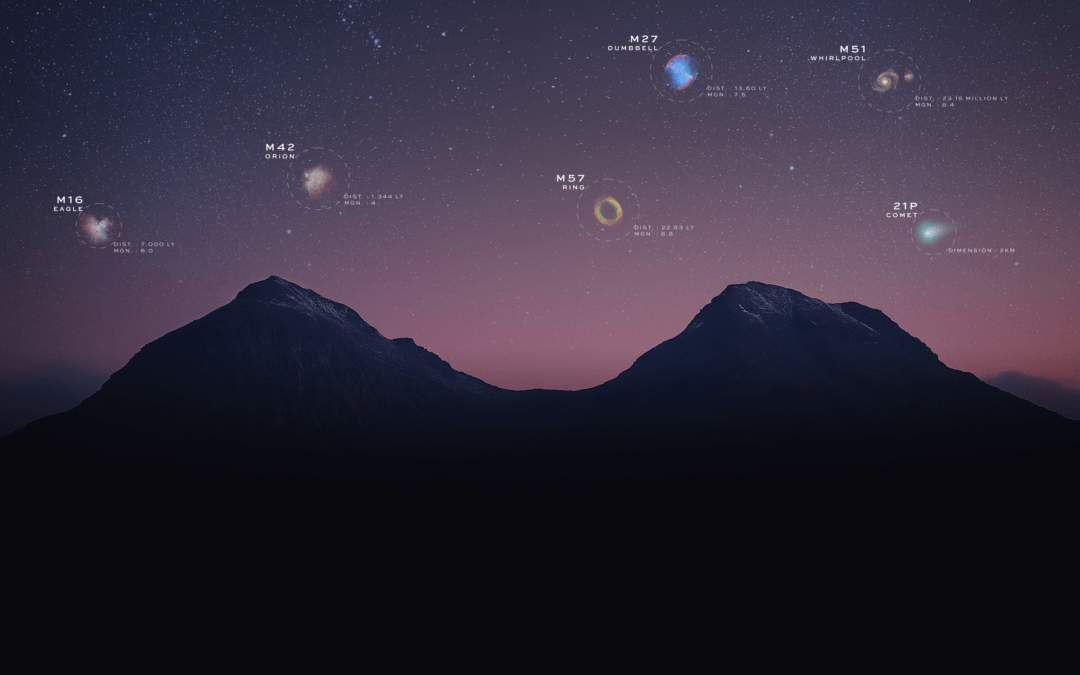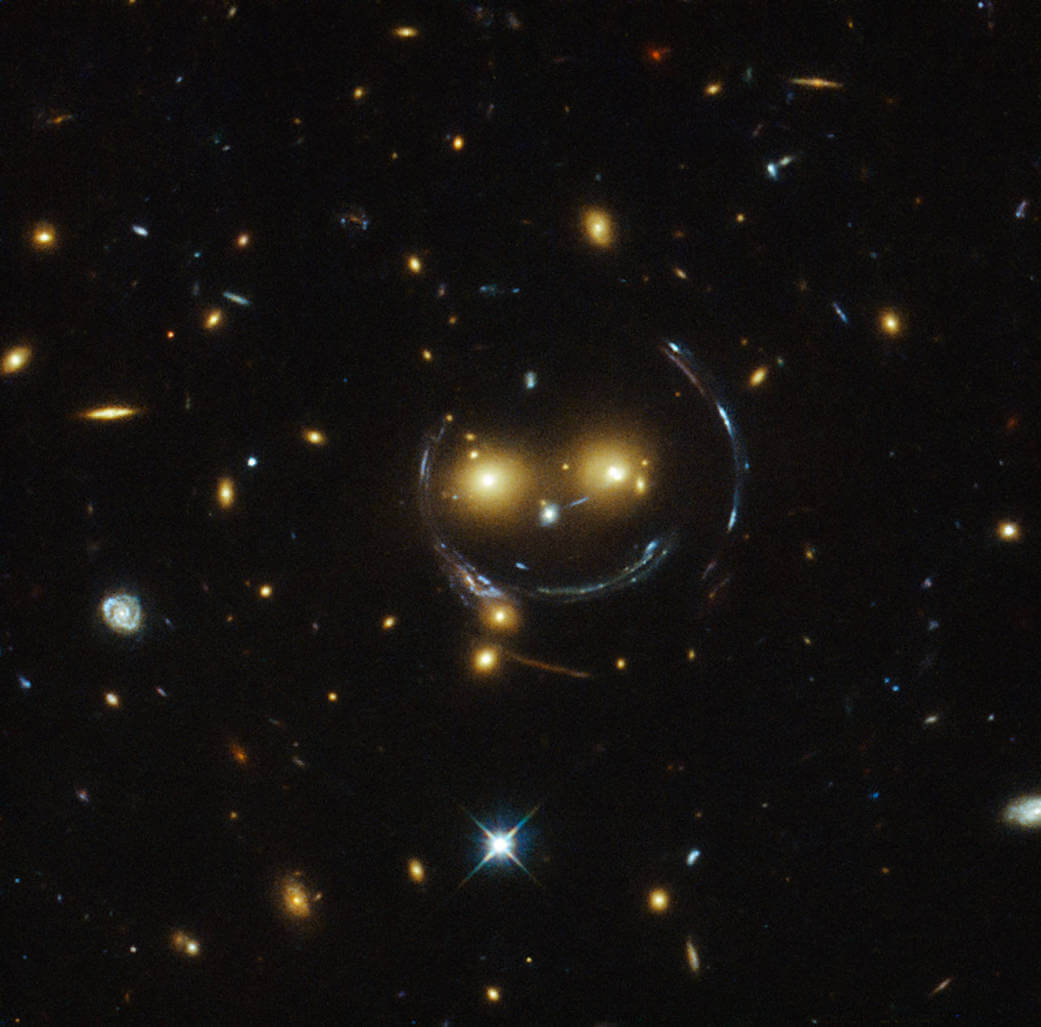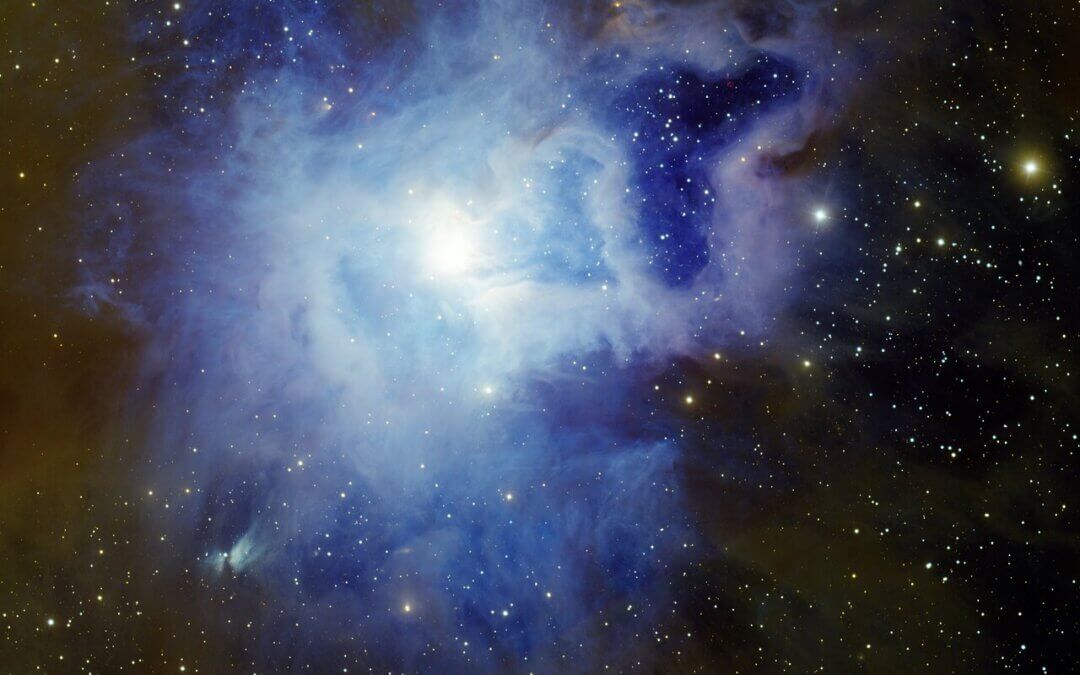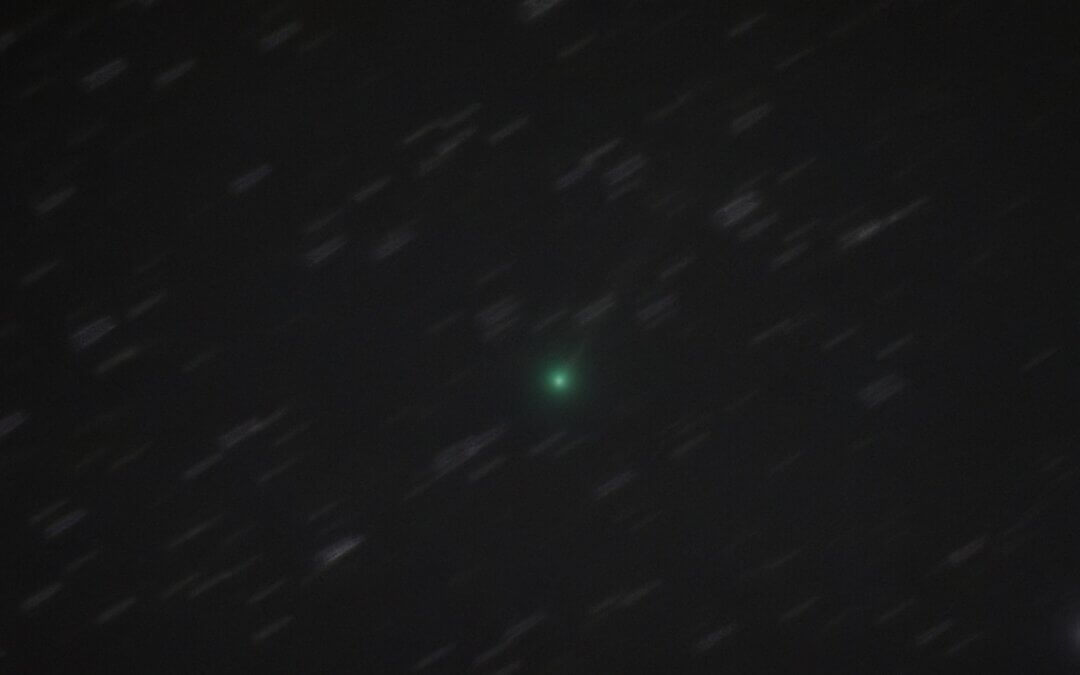Among the rocky and ringed planets in our Solar System are countless small objects whirling around the Sun. These objects fall into two broad categories: asteroids and comets. The difference between comets and asteroids largely comes down to composition. Comets are made of ice and rock, and asteroids are made of rock and metal. However, both these bits of rock and ice and metal are left overs from the formation of the planets 4.6 billion years ago – which is why some scientists refer to them affectionately as “space junk.”
Comets are also sometimes called “dirty snowballs” because they’re usually conglomerations of ice and rocks, and often covered in dark dust. Asteroids are divided into many different types based on what they’re made of, which can be rock, metal, or a combination of the two. The distinction between the objects is due to where they originate: comets formed farther out in the Solar System, where their ices could stay solid due to the cold temperatures, whereas asteroids formed in a warmer environment closer to the Sun.
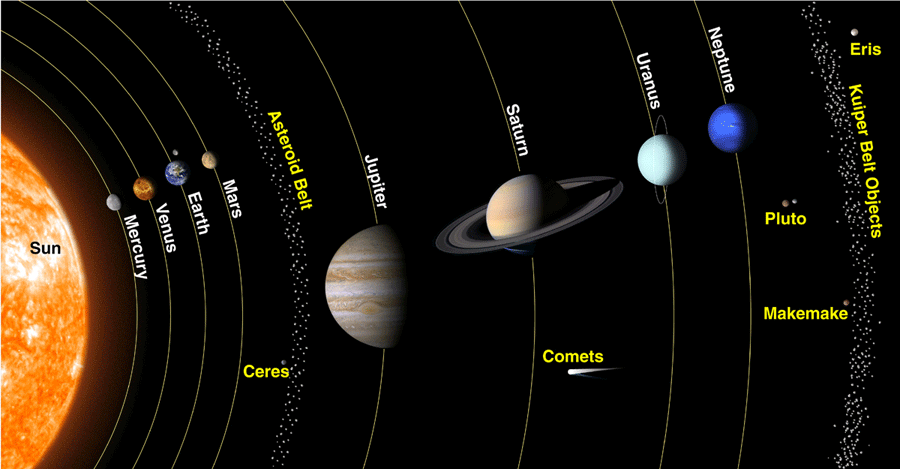
The makeup of the Solar System. Many asteroids reside in the asteroid belt between Saturn and Jupiter, while comets tend to orbit from the outer reaches of our planetary system – the Kuiper belt and beyond. Credit: NASA
Seeing comets vs asteroids from Earth
Both asteroids and comets are occasionally visible from Earth, though without a telescope, you can typically only see bright comets, like Halley’s Comet, last seen in 1986. Comets are so often visible outside our atmosphere because they have a long dust tail, formed when dust is released from the comet’s core as ices turn to gas near the Sun. That dust then trails off as the comet flies through space and can stretch for millions of kilometers!
However, pieces of both asteroids and comets can become naked-eye sights if they fall into Earth’s atmosphere. The blaze of light these objects leave as they burn up is called a meteor, and if we find these objects on the ground later, we call them meteorites. Meteor showers, which happen regularly each year, occur when the Earth’s orbit passes through a cloud of debris from a comet or asteroid (typically a comet). As we pass through that debris field, tiny pieces of it burn up in our atmosphere and leave a flurry of streaks.
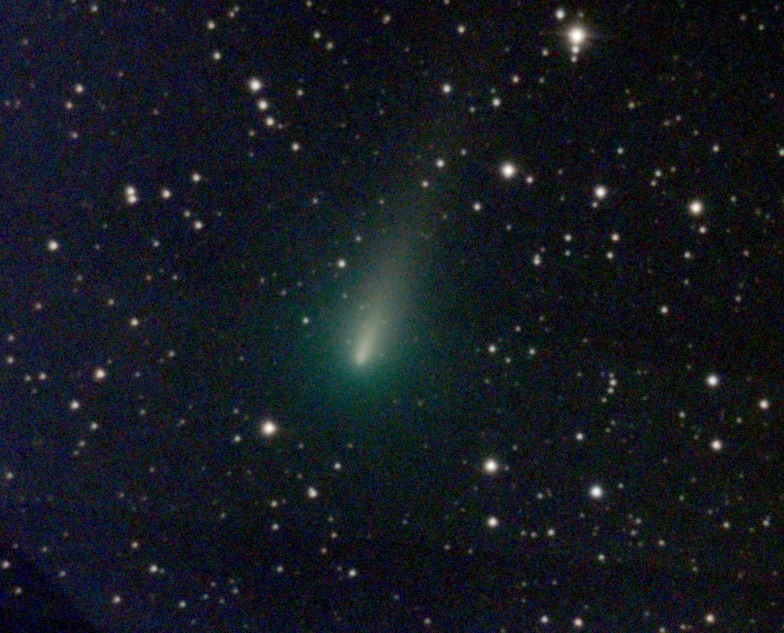
Crowd-sourced observations of the Comet ATLAS from Unistellar Network members in Europe on April 11, 2020. The tail makes the comet highly visible!
Observing comets and asteroids with Unistellar
Both comets and asteroids are visible with a Unistellar Telescope, and we regularly update our network when one might be visible. Unistellar observers are invited to seek out these objects, and even submit their observations that help astronomers studying this “space junk.” In 2022 alone, our network made 1,449 observations of nine different comets and 985 observations of 32 near-Earth asteroids! That included observing the history-making Double Asteroid Redirection Test (DART) mission to crash a spacecraft into an asteroid, as well as a target of the Lucy mission.
Professional and amateur astronomers study asteroids to better understand their size and orbit, which can be very important for Potentially Hazardous Asteroids that might pose a threat to our planet. In the case of comets, skygazers keep an eye on them to track their activity as they travel near and away from the Sun.
Both teach astronomers about the earliest stages of our Solar System, since they serve as time capsules from those formative years. So perhaps they are not “space junk,” but rather, “space treasure” – and you can observe both these types of treasures with the Unistellar Network!
Further readings
3 Reasons to observe this month
Entdecken Sie jeden Monat drei faszinierende Himmelsereignisse, die Sie mit Ihrem Unistellar-Teleskop beobachten können.
Unistellar Community Included In Multiple Scientific Papers
Did you know Unistellar Citizen Astronomers are often cited in published scientific papers? Find out how you can contribute too!
Neues Update der Unistellar-App: Version 3.0
The latest Unistellar App Update, version V3.0, is now live. Explore a smooth stargazing experience
Halloween Observing Guide: Spooky Deep-Sky Objects
These Halloween deep-sky objects will add some light to those dark, spooky nights. Treats, tricks, and telescopes await!
Fall Into Cygnus and More With September Deep-Sky Objects
Unistellar’s September targets include a bevy of star clusters and nebulae of all sorts. Celebrate stars in all stages of life this month!
See Newfound Comet Nishimura Before it’s Too Late!
Catch newly discovered comet C/2023 P1 (Nishimura) before it flies too close to the Sun and potentially disintegrates!
